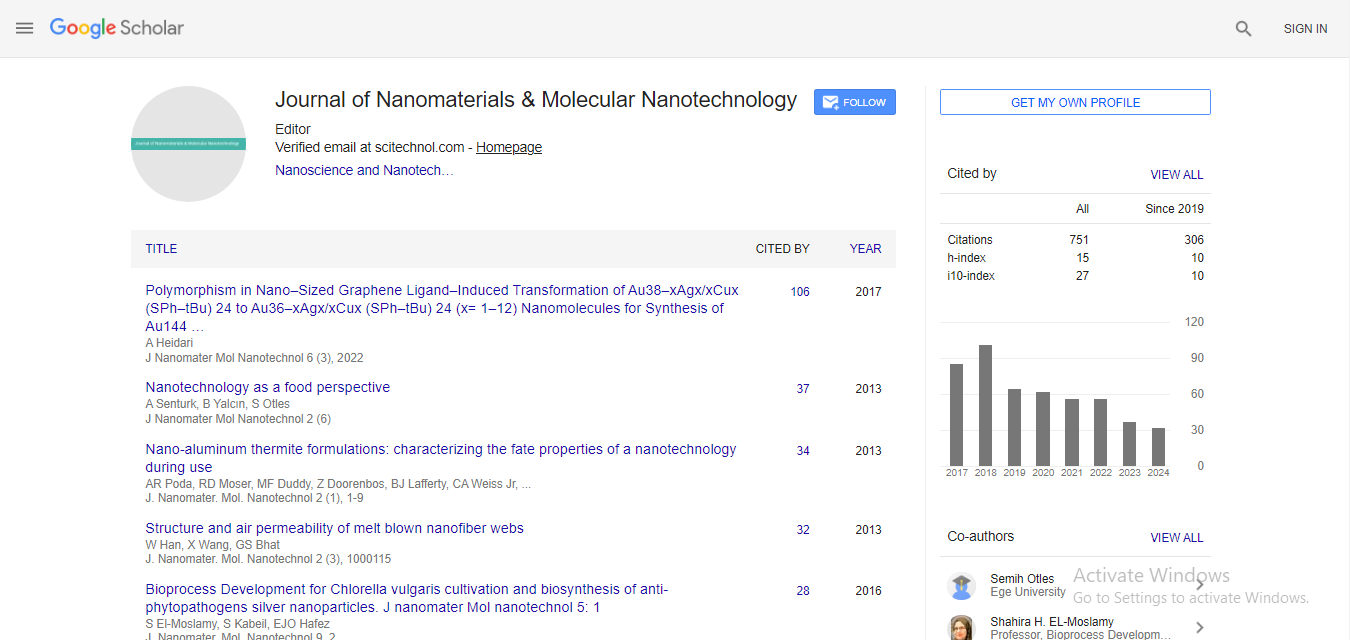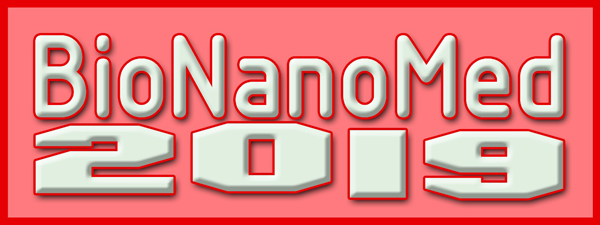Interaction of unfolded fullerene nanoparticles with heavy-metal ions in water solutions
Roberto Pizzoferrato
University of Rome Tor Vergata, Italy
: J Nanomater Mol Nanotechnol
Abstract
Graphene oxide quantum dots (GOQDs) have recently attracted much attention due to their reactivity towards heavy metals in water solution, which leads to complex formation and quenching of the intrinsic UV - induced fluorescence of GOQDs. With regards to these properties, we have investigated a novel type of graphene like nanoparticles synthesized by oxidative cage opening and unfolding of C60 fullerene, thus referred to as unfolded fullerene nanoparticles (UFNPs). UFNPs showed similar properties as GOQDs, with certain peculiar differences that could be due to the different lattice structure and contents of defects. Specifically, interaction with Cu2+, Pb2+, Cd2+ and As (III), resulted in different variations of the fluorescence intensity and optical absorbance for each distinct ionic species. In particular, while a typical incremental fluorescence quenching was observed with Cu2+, Pb2+ and As(III) (see Figure 1, red curves), the presence of cadmium ions produced a remarkable enhancement of fluorescence intensity (Figure 1, green curves). In all cases, the fluorescence life time remained unchanged and the dependence of the fluorescence variations on pH was similar to that reported in metal adsorption by graphene or carbon nanotube. Moreover, the addition of Pb2+ above a certain ion concentration affected the stability of the suspension with precipitation and removal of the metal ions from the solution. All these effects can easily be explained with the formation of stable ground state complexes via metal chelation by the carboxyl groups decorating UNFPs. However, the different types of the observed response require further studies for a more refined model, possibly considering binding of the metal ion to different locations. The proper enhancement and implementation of such metal binding processes could in fact be very useful for applications to metal sensing and remediation of waste water. Recent Publications 1. Georgakilas V, Perman J A, Tucek, and Zbori L (2015) Broad family of carbon nanoallotropes: classification, chemistry, and applications of fullerenes, carbon dots, nanotubes, graphene, nanodiamonds, and combined superstructures. Chemical Reviews 115(11):4744-822. 2. Ju J and Chen W (2015) Graphene quantum dots as a fluorescence probes for sensing metal ions: synthesis and applications. Current Organic Chemistry 19:1150–1162. 3. Pizzoferrato R, Ziller T, Micozzi A, Ricci A, Sterzo C L, Ustione A, Oliva C and Cricenti A (2005) Suppression of the excimer photoluminescence in a poly (arylene–ethynylene) co-polymer. Chemical Physics Letters 414:234-238. 4. Lakovicz J R (1999) Principles of Fluorescence Spectroscopy. Protein Fluorescence 529-567. 5. Ciotta E, Prosposito P, Tagliatesta P, Lorecchio C, Stella L, Kaciulis, S, Peiman S, Placidi S and Pizzoferrato R (2018) Discriminating between different heavy metal ions with fullerene-derived nanoparticles. Sensors 18(5): pii: E1496.
Biography
Roberto Pizzoferrato is a Professor in the Department of Industrial Engineering at University of Rome Tor Vergata, Rome, Italy. To date he has published over 120 peer reviewed articles and conference proceedings. He is a member of the Advisory Board of Sensors Journal. His areas of interest are optical properties of nanomaterials, sensing of heavy metals and layered double hydroxides (LDHs).
E-mail: pizzoferrato@uniroma2.it
 Spanish
Spanish  Chinese
Chinese  Russian
Russian  German
German  French
French  Japanese
Japanese  Portuguese
Portuguese  Hindi
Hindi 



